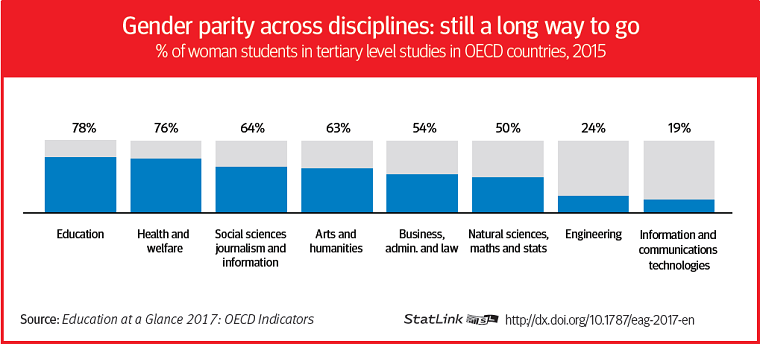Gender engineering

Graph - Gender parity across disciplines: Still a long way to go
More women are going into postsecondary education than men: women’s enrolment rates are 11 percentage points higher on average than that of men.
But look closer: there are noticeable differences between the disciplines women are choosing to pursue and those of their male counterparts. In fact, women make up 78% of students in education and 76% of students in health and welfare. Women are over-represented in these areas, as they are in the arts and humanities, social sciences, journalism and information.
Meanwhile, only 24% and 19% of students in engineering, and information and communications technologies (ICT), respectively, are women. Men and women are equally represented at 50% in the natural sciences, maths and statistics, as well as business administration and law at 54%. In 2015, an average of 27% of new entrants in OECD countries selected a field of study in science, technology, engineering or mathematics (STEM) with most going into engineering, manufacturing and construction–only 24% of the latter were women. Encouraging more women to take up careers in these areas is a policy concern in the OECD area.
©OECD Observer No 311, Q3 2017
OECD (2017), Education at a Glance 2017: OECD Indicators, OECD Publishing, Paris. https://doi.org/https://doi.org/10.1787/eag-2017-en
